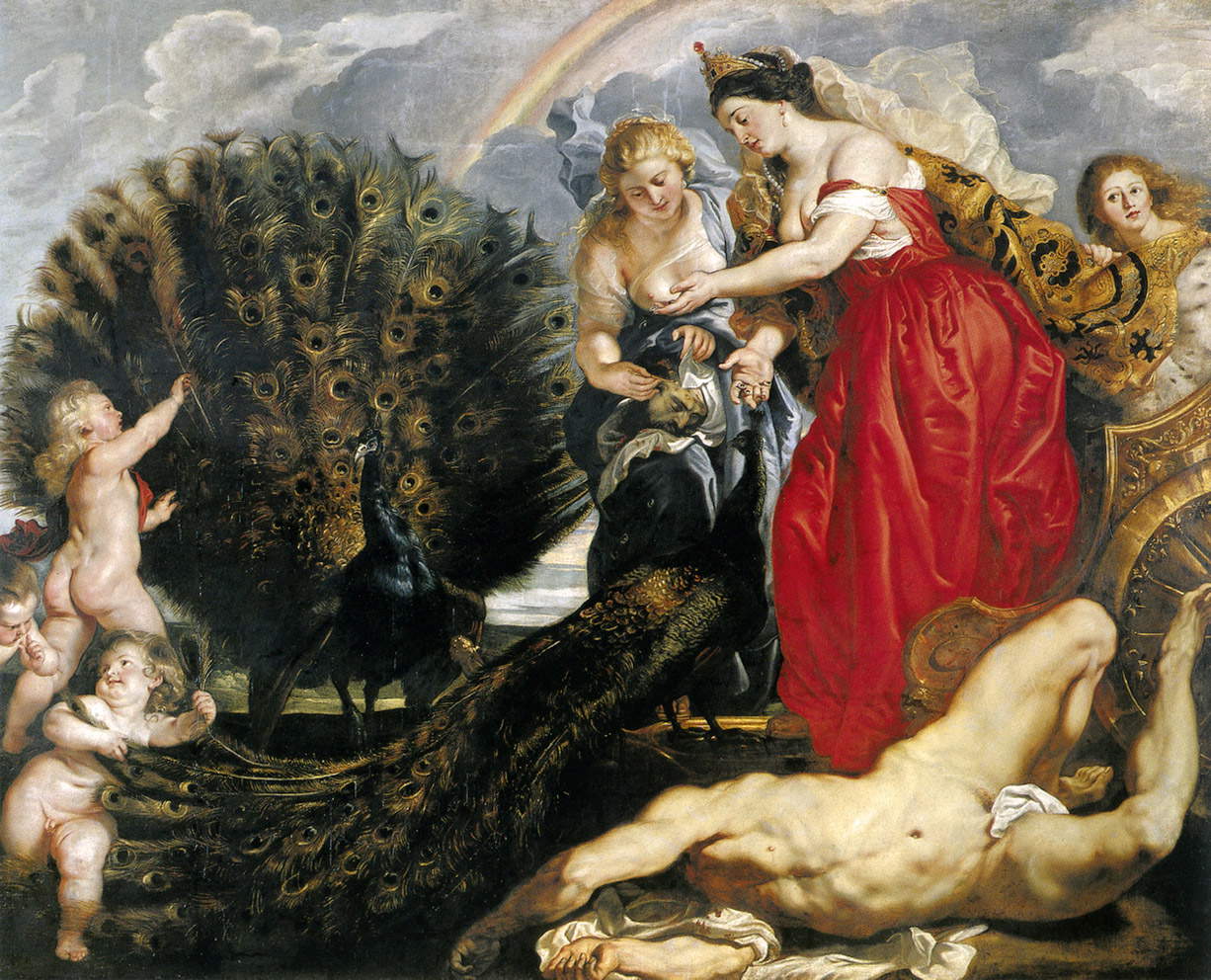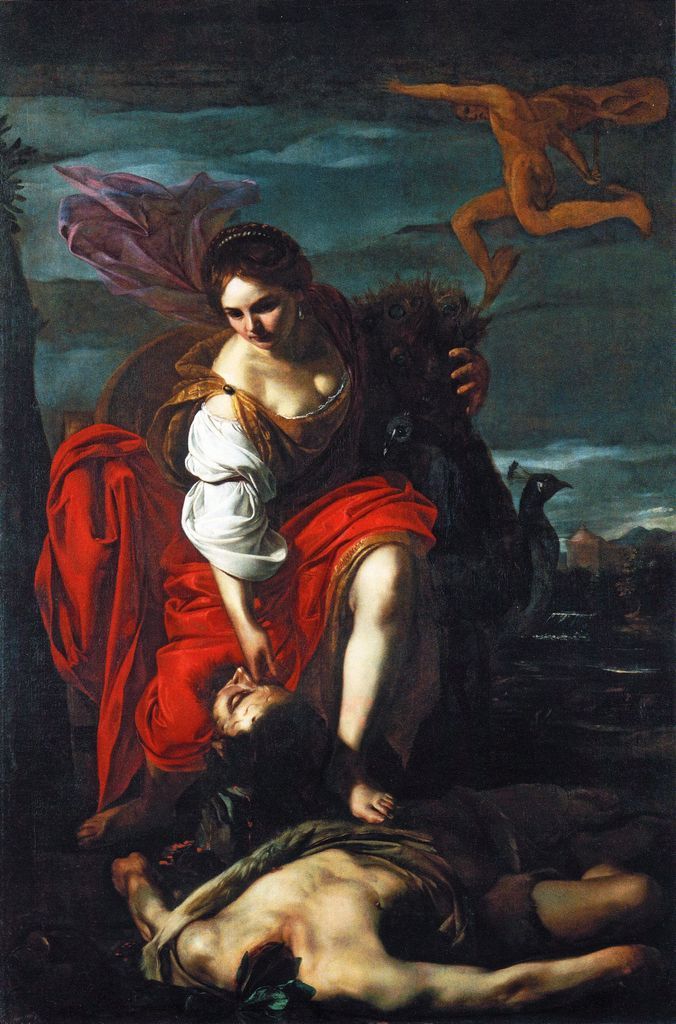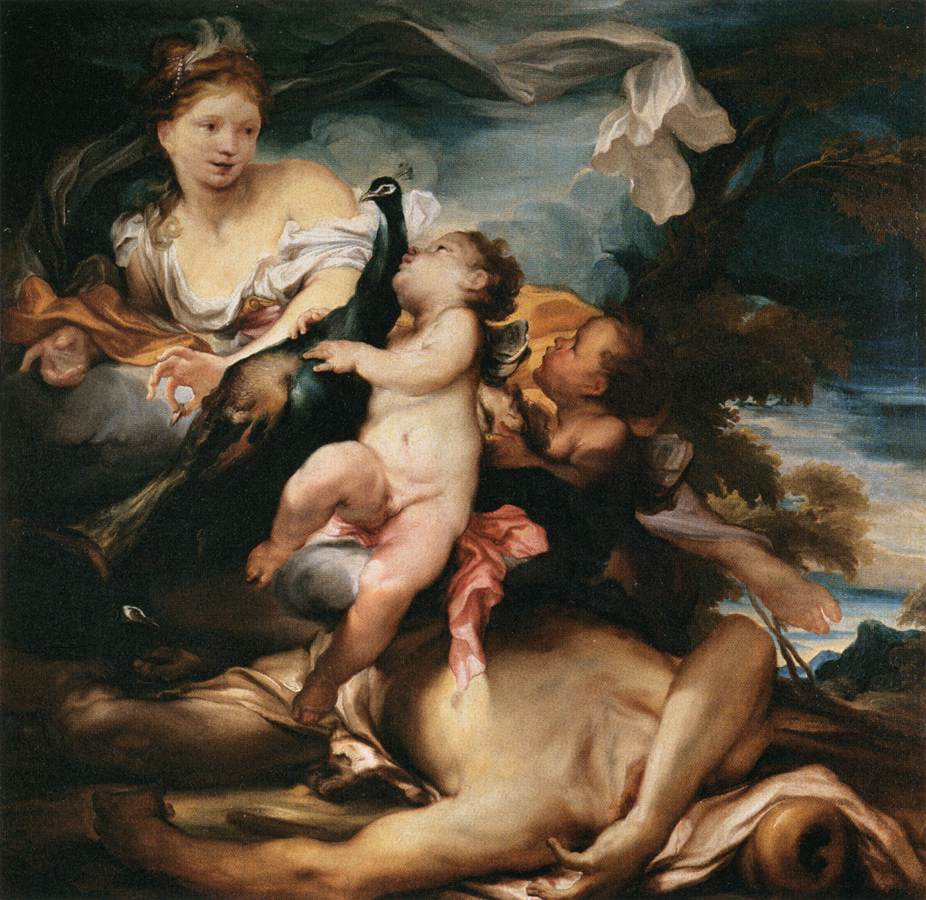Nature has created true masterpieces in the animal world. One of the most jaw-dropping examples is the peacock: it is as if a painter from who knows where in the universe took pleasure in painting with extraordinary meticulousness an infinite number of eyes on its tail, after dipping its body in a brilliant blue. When a peacock delights and privileges us by letting us admire his colorful wheel we are still fascinated, amazed, thinking how it is possible that such a work of art could have been made on the feathers of that animal. For him, the wheel is a courtship gesture toward the female specimen, he shows himself in all his beauty in order to seek admiration in her: this is why he has attached to himself the label of a vain bird, so much so that he has derived from his attitude the term “strutting” even in reference to a person.
According to mythology, through which the ancients sought to explain everything, it was not a painter who colored the peacock’s tail with those shapes, but rather the queen of the gods, Juno, the bride of Jupiter, constantly grappling with the infidelities of the god of the Roman pantheon. Indeed, Ovid ’s Metamorphoses relates that Jupiter had fallen in love with the young nymph Io, but was well aware of his wife Juno’s jealousy and distrust. Therefore, to try to conceal the nymph’s true identity, he decided to turn her into a white heifer. Juno, however, is not easily fooled: suspicious of that sudden appearance and already suspecting that yet another deception of her husband was behind it, she asks Jupiter himself as a gift of the heifer. The king of the gods, though reluctant, dares not openly oppose his wife and, in order not to arouse further suspicion, accepts her request. The goddess, who was well aware of her husband’s deceitful habits, then decides to put the heifer under the surveillance of the faithful Argos, who possessed a hundred eyes distributed all over his head. It was precisely this characteristic that made Argos almost invincible in his vigilance, for even when he allowed himself a moment’s rest he never closed all his eyes, but only part of them, always leaving the others wide open. Jupiter, tormented by the thought of the captive Io and eager to restore her freedom, begins to ponder how to deceive the hundred-eyed guardian. He therefore chooses to rely on the divine messenger, Mercury, who could combine his intelligence with the power of speech and the charm of music. Jupiter instructs him to disguise himself as a simple shepherd and approach Argos naturally, bringing with him a musical instrument, the syrinx. Mercury faithfully carries out the order: he presents himself as a humble shepherd and begins to play a melody that immediately captivates Argos, who, as planned in the plans, invites the young man to sit beside him. Mercury, with great skill, alternates between music and storytelling: in fact, he narrates the story of Pan and the nymph Syrinx, weaving words and notes into a harmony so pleasing that it makes Argos’s wakefulness increasingly tiring. One by one, the guardian’s eyes begin to close, until even the last ones succumb to sleep. At that point Mercury, seizing the auspicious moment, cuts off his head. The young nymph, still in the form of a heifer, is now free. Juno, however, upon learning of the tragic end of her faithful servant, is deeply saddened and, to honor his memory, decides to preserve at least part of his essence. In fact, she collects all his eyes, a symbol of her tireless vigilance, and applies them to the tail feathers of the peacock, an animal sacred to her. Since then the peacock has carried those magnificent eyes on its tail, an eternal memory of Argos’ devotion and fate.
The mythological episode is solemnly depicted in the painting Juno and Argos made by Peter Paul Rubens in about 1610 and preserved in the Wallraf-Richartz Museum in Cologne. The figure of Juno is immediately recognizable here, majestic, swathed in a red gown and wearing a gold-embroidered cloak that underscores her identity as queen of the gods, further made explicit by the precious crown that encircles her head. In her hands she has the eyes of Argos, ready to be applied to the feathers of the peacock’s tail that is seen between her and a blond maiden, dressed in a blue gown, who is helping her in the delicate operation, probably Iris. Argo’s head is in fact resting on the latter’s robe, while the body of the guardian lies on the ground in the foreground, now lifeless. Behind Juno’s golden cloak is another maiden, with a delicate and refined face, who observes the scene.

Three playful putti then animate the scene by teasing with the feathers of the peacocks (in addition to the one in the center of the scene with its tail closed because it is still completely to be embellished with Argos’s eyes, another peacock, which is already doing the wheel, makes a fine display), thus introducing the Baroque vitality that dilutes the dramatic nature of the myth. The composition, typical of Rubensian language, alternates solemnity and sensuality: the full, dynamic bodies (extraordinary the dynamism it conveys despite the lifelessness of Argo’s outstretched body), the sumptuous palette dominated by reds, golds, and blues, the contrast between the decorative grace of the peacocks and the dramatic nature of the lifeless body of the hundred-eyed guardian. However, Juno’s gesture comes across as both solemn and tender, while all around explodes Baroque magnificence: the cherubs at play, the unfurling peacock wheel, the rainbow-lit sky that seals the scene with an aura of wonder and transcendence, in reference to the presence of Iris. Argo’s death appears here not as a tragic event, but as a metamorphosis: an act destined to survive beyond life.
With narrative and visual power, Rubens weaves sensuality, chromatic richness and dramatic intensity into a single image, transforming the myth into a baroque spectacle.
“The predominance of yellow, red and blue in Rubens’s works of this period has been widely attributed to the artist’s interest in color theory, particularly that of Aristotle and D’Aguilon,” writes Marcia Pointon in her essay Colour and Tactility: Lithic Influences during Rubens’s Period in Italy. “The golden yellow so prevalent in this painting, however, also reflects the dominant yellows of St. Gregory’s robe in the Vallicella altarpiece and the marble facing of the Cesi Chapel, while the elaborate motif of both Juno’s royal cloak and the peacocks’ tails recalls the precious gemstones in the Chapel of St. Philip Neri. Indeed, the very act of setting the eyes in the peacocks’ tails is that of a craftsman, transforming the eyes into the ’gemmis stellantibus’ described by Ovid, while the ’perceptual mixing’ of colors that has been noted in this painting recalls the mixing of colors so characteristic of marble. The color of the eyes is determined by the iris, named after the rainbow goddess who assists Juno.”
Very theatrical is another work on the same theme made a few years later, in about 1617, by Orazio Riminaldi, now in the Doria Pamphilj Gallery in Rome. In an evocative composition built on chiaroscuro, the goddess Juno stands out in the center, in a pose that is both dynamic and powerful, as she is intent on placing the eyes of Argos on the tail of the peacock she has beside her, in half-light. Instead, on her snow-white skin and the ample draperies of the robes she wears, which are bright red in color, a scenic light rests, invading even the naked torso of Argos, lying on the ground. Juno’s left leg emerges from her robe: the goddess’ body is in a twist; with her left hand she clasps the tail of the animal sacred to her, while with her right she removes her eyes from the head of her trusty guardian. Mercury is hovering in the clouds and moving away after obeying Jupiter’s will. It is a “canvas that, beyond the undoubted Manfredi elements,” writes Pierluigi Carofano in the essay Orazio Riminaldi, un artista pisano tra tra tra caravaggismo e classicismo, "betrays the study of Francesco Mochi’s Santa Marta from the Barberini chapel in Sant’Andrea della Valle for the stride-like posture, of statuesque elegance, of the protagonist. But the elusive profiles, the elongated, bistrate eyes, the wraparound cloths punctuated by wide folds stereometrically arranged in space speak of attention to the painting of the French Régnier. Admittedly, Riminaldi fails to completely abandon his idealistic-Tuscan imprinting, manifest in the unnatural fluttering behind Juno’s shoulders; but the realistic arrangement of the red cloth is among the most beautiful things in post-Caravaggesque painting, as is the slow turning of the white shirt on the protagonist’s arm. For these reasons, it is appropriate to consider Juno among Riminaldi’s firsts in Rome, dense as it is with thoughtful references to current painting, mixed with late sixteenth-century legacies especially in the very drawn anatomy of Argo."


Gregorio De Ferrari, among the greatest exponents of the Genoese Baroque, also depicted an episode from Ovid’s Metamorphoses between 1685 and 1695 in a painting now in the Louvre in Paris. The work fits fully into the Genoese Baroque style of the second half of the seventeenth century, and when observing it, one immediately perceives the sense of continuous movement that runs through the figures: the bodies are not rigid, but seem to sway, bend and intertwine in a dance of sinuous lines. A fluidity that is a typical feature of De Ferrari, an artist who prefers elegant poses, capable of giving grace even to a scene that, by subject, is tragic. Juno, as per iconography, is applying the eyes of Argos to the feathers of the peacock. Two putti appear beside her: one holds a peacock in his hands, the other the head of the guardian, and both turn their gaze toward the goddess. In the foreground lies the lifeless body of Argos on the ground. Light plays a key role: it is not evenly diffused, but focuses on faces and bodies, making them stand out from a darker, more atmospheric background. The result is a theatrical effect reminiscent of a stage set, with strong contrasts between warm highlights and shadows. The color also contributes to this feeling, with soft, bright complexions that stand out against the darker tones of the landscape. The two trees with twisting trunks that appear in the background recall Giovanni Benedetto Castiglione. The fluttering drapery of Juno’s dress, on the other hand, has been related to that of an angel depicted in De Ferrari’s Piscina Probatica, while the presence of the peacock harks back to the vault of Palazzo Durazzo-Brignole in Genoa.
Mythology sometimes has the extraordinary ability to make us see the world with a different gaze. Thus, in front of a peacock unfurling its wheel, we will see not only extraordinarily decorated feathers, but the watchful eyes of Argos, made immortal by Juno’s divine gesture.
Warning: the translation into English of the original Italian article was created using automatic tools. We undertake to review all articles, but we do not guarantee the total absence of inaccuracies in the translation due to the program. You can find the original by clicking on the ITA button. If you find any mistake,please contact us.